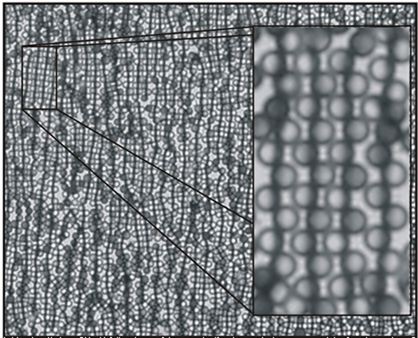Sumit Gangwal
| Ph. D., Chemical Engineering, 2010 North Carolina State University M.S., Chemical Engineering, 2007 North Carolina State University B.S., Chemical Engineering, 1997 North Carolina State University |  |
Research Focus: Nanoscale Directed Self-Assembly in Electrical and Optical Fields
Fabricating nanostructured materials or nanoscale devices will employ self-assembly. Engineering micro-to-nanoscale devices and nanostructured materials requires control and understanding of the thermodynamics and kinetics of self-assembly of Nanoscale “building blocks” in solution. To harness self-assembly for man-made applications a high level of direction and control are required. As part of the NSF Nanoscale Interdisciplinary Research Team (NIRT Grant CTS-0506701, 2005) for nanoscale directed self-assembly in electrical and optical fields, my project has a joint collaboration with the University of Delaware and California Institute of Technology.
My specific research area involves the synthesis of “Janus” particles (whose hemispheres are physically or chemically different). These “Janus” particles are of growing importance for the development of novel materials, but the behavior of such particles in external fields has not been studied in depth. We have investigated the effect of external AC electric fields on Janus particles consisting of a dielectric hemisphere and a conductive hemisphere. The operational diagram of particle response and structure assembled as a function of frequency and field intensity has been investigated.
At low frequencies (< 10 kHz) of the applied AC fields, the particles orient such that the plane between their hemispheres (gold-coated/conductive hemisphere appearing dark and bare/dielectric hemisphere appearing light) align in the direction of the electric field. The particles then move normal to the applied electric field with their polystyrene hemisphere forward. The larger particles move at a higher velocity than the smaller ones. We offer the first experimental verification of this EHD effect, which has been recently predicted theoretically. The EHD effect is suppressed in AC electric field of higher frequency (> 15 kHz). In this case the particles self-assemble by dielectrophoresis into new types of metallodielectric colloidal crystals, where the metallized halves of neighboring particles align into conductive lanes through the crystals (see figure below).

Figure 1: Anisotropic particles (with 5.7µm diameter) subject to an applied AC field of 40 kHz at low field strength in a 2D-experimental cell. The particles orient such that their conductive sides are in contact with each other.
The propelling metallodielectric particles could be used as microscopic mixers, “shuttles” and self-propelling on-chip sensors. Their self-assembly at high frequency could be used in the fabrication of photonic crystals of new symmetries, massively parallel waveguides, and materials with directional electrical and heat transfer.
Publications
Gangwal, S.; Cayre, O. J.; Bazant, M. Z.; Velev, O. D. Physical Review Letters 2008, 100, 058302.
